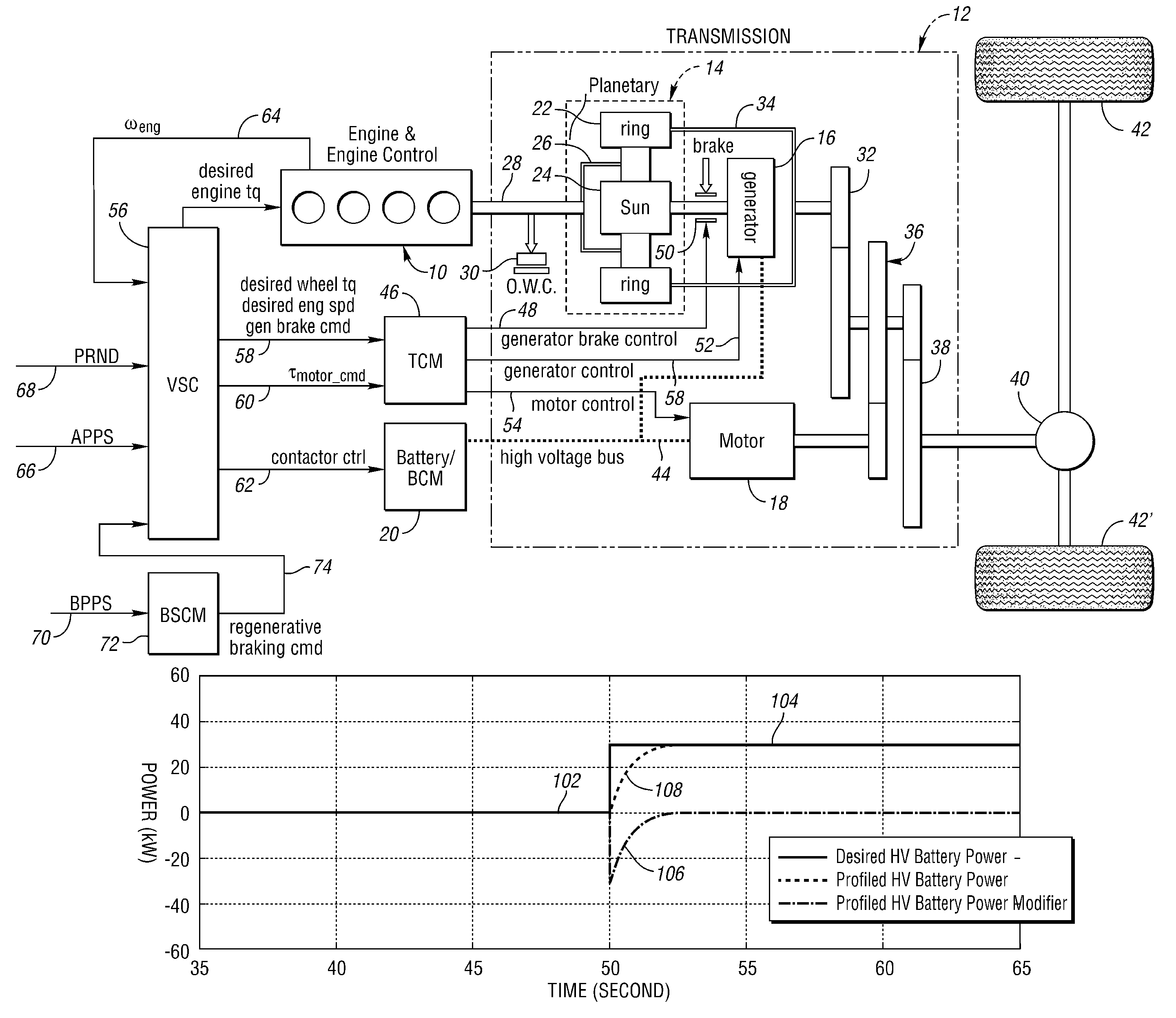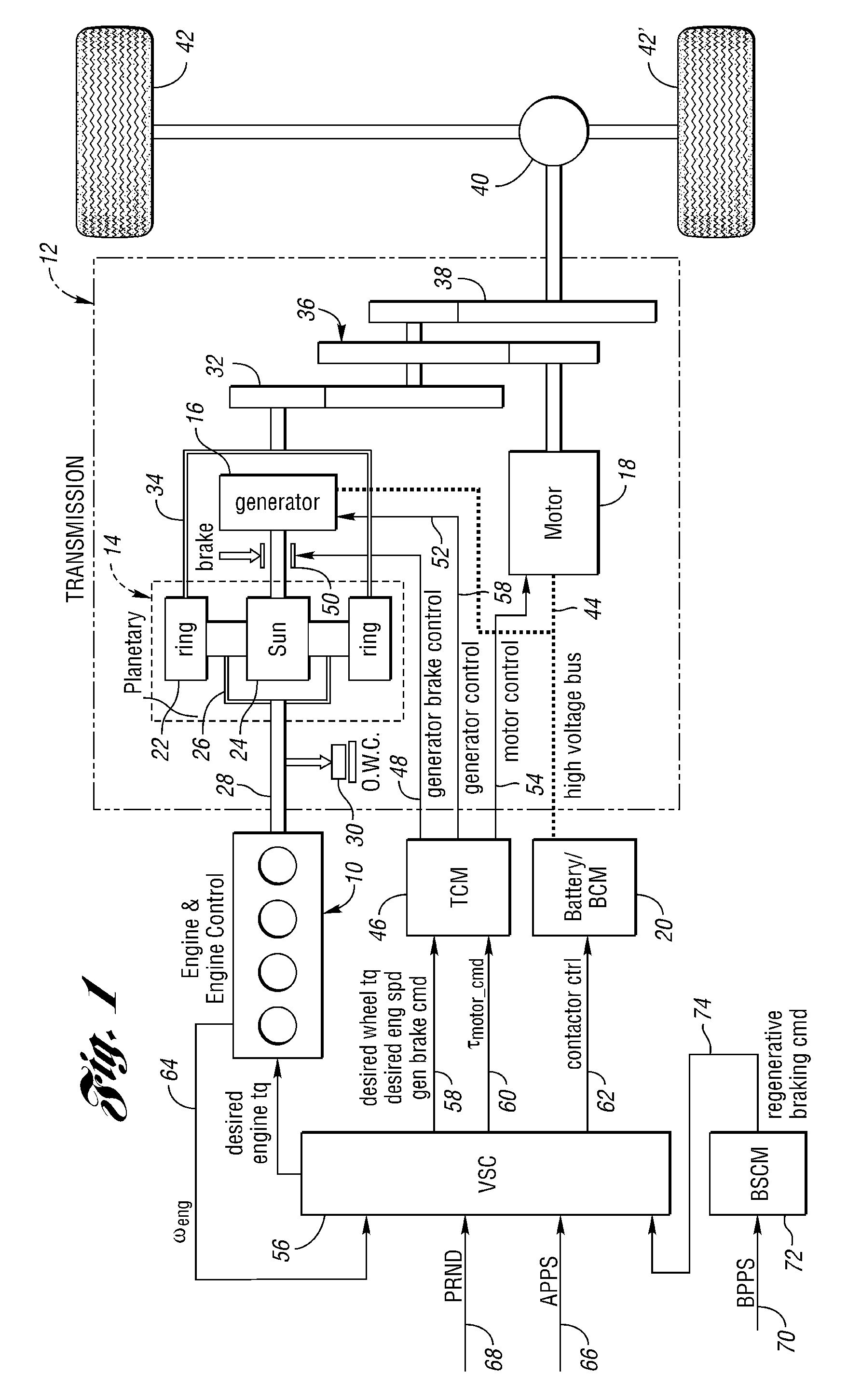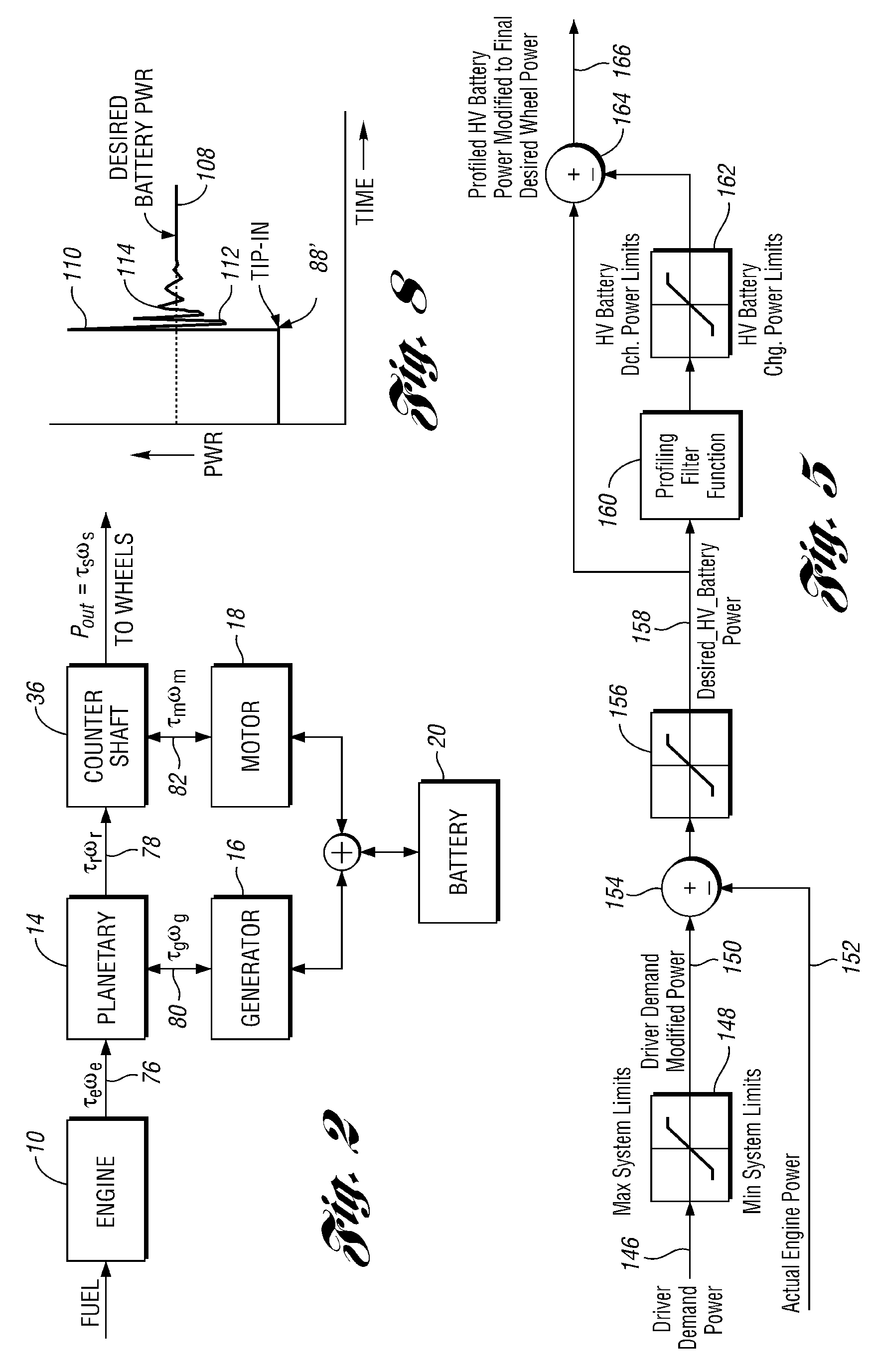Method and system for determining final desired wheel power in a hybrid electric vehicle powertrain
a hybrid electric vehicle and powertrain technology, applied in vehicle position/course/altitude control, process and machine control, instruments, etc., can solve problems such as unwound power clipping
- Summary
- Abstract
- Description
- Claims
- Application Information
AI Technical Summary
Benefits of technology
Problems solved by technology
Method used
Image
Examples
Embodiment Construction
[0025]FIG. 1 shows a power split hybrid electric vehicle powertrain, which has parallel power flow paths from two power sources to vehicle traction wheels. One power source is an internal combustion engine and the other power source is a generator / motor / battery system. The power flow paths are defined in part by gearing, the engine being connected to one element of the gearing and the generator of the generator / motor / battery system being connected to another element of the gearing.
[0026]Although the powertrain schematically illustrated in FIG. 1 is capable of embodying the invention, the invention also could be used in any of a variety of other hybrid electric vehicle powertrains in which an engine power source and an electric power source are used to establish simultaneous power delivery to vehicle traction wheels.
[0027]In the embodiment of FIG. 1, numeral 10 generally designates an engine and an engine control, and numeral 12 generally designates a transmission, which includes pla...
PUM
 Login to View More
Login to View More Abstract
Description
Claims
Application Information
 Login to View More
Login to View More - R&D
- Intellectual Property
- Life Sciences
- Materials
- Tech Scout
- Unparalleled Data Quality
- Higher Quality Content
- 60% Fewer Hallucinations
Browse by: Latest US Patents, China's latest patents, Technical Efficacy Thesaurus, Application Domain, Technology Topic, Popular Technical Reports.
© 2025 PatSnap. All rights reserved.Legal|Privacy policy|Modern Slavery Act Transparency Statement|Sitemap|About US| Contact US: help@patsnap.com



